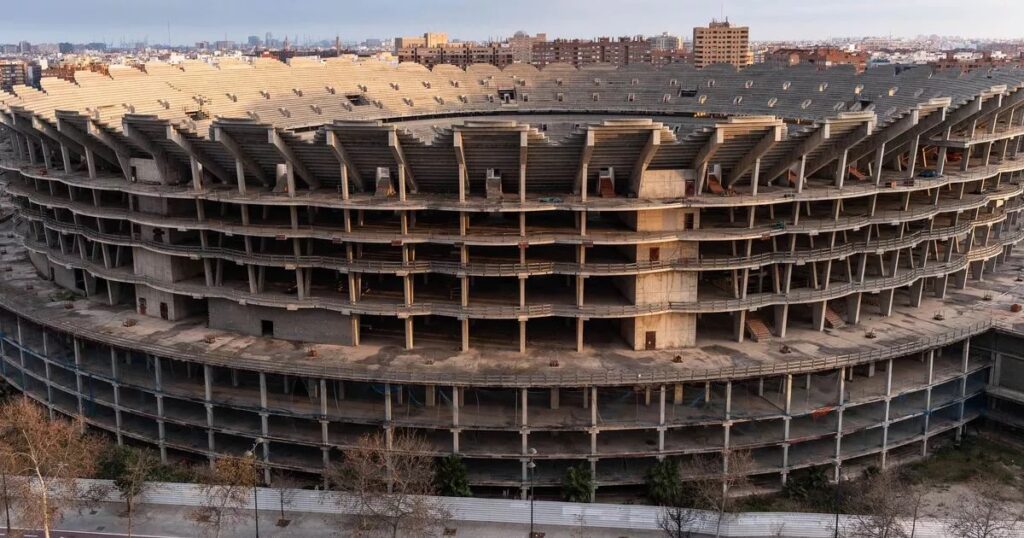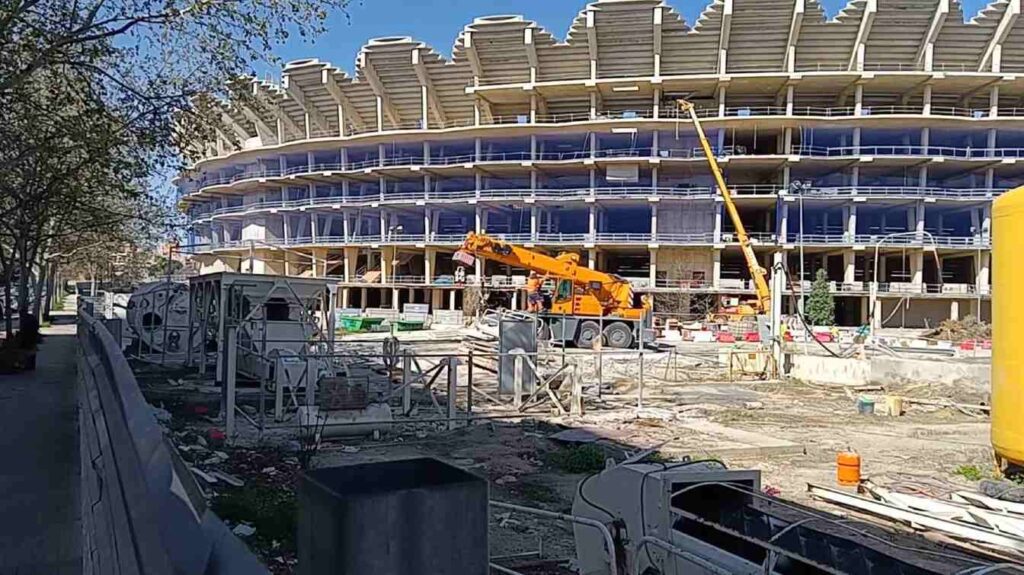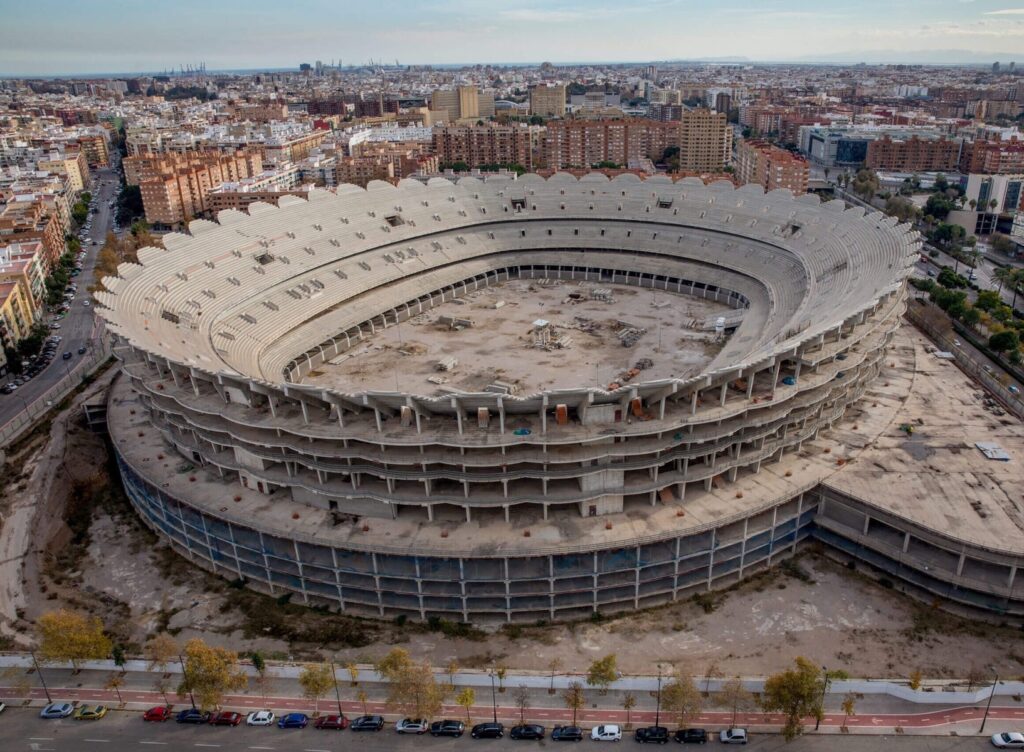The story of the new Mestalla Stadium is one of grand ambition clashing with harsh reality…
The story of the new Mestalla Stadium is one of grand ambition clashing with harsh reality. Originally conceived in the early 2000s, the stadium was meant to mark a bold new era for Valencia CF, one of Spain’s most historic and passionately supported football clubs. Today, more than 15 years later, the skeletal remains of an unfinished stadium stand as a stark reminder of economic crisis, mismanagement, and lost potential.
Valencia CF is far more than just a football club in this Mediterranean city. Founded in 1919, it is a pillar of the local identity, culture, and pride. The club’s successes have resonated far beyond the pitch: six La Liga titles, eight Copa del Rey trophies, and two UEFA Super Cups, along with appearances in two Champions League finals in the early 2000s. Legendary players like Gaizka Mendieta, David Villa and Santiago Cañizares have worn the white shirt, earning the club a devoted global following and a cherished place in Spanish football history.
From 1923 to today: the story of the new Mestalla stadium
The old Mestalla stadium, opened in 1923, has been central to this legacy. Steeped in tradition and known for its intense atmosphere, it sits close to Valencia’s city center and has witnessed generations of footballing triumphs and heartbreak. But as football modernised, club executives sought a state-of-the-art replacement that could boost revenue and reflect their European ambitions. Thus, plans for the new Mestalla were born.



Construction on the new 75,000-seat stadium began in 2007 on Avenida de las Cortes Valencianas. But by 2009, with the global financial crisis in full swing and the club deeply in debt, the project abruptly halted. The crisis became worse by the failure to sell the old Mestalla’s prime real estate—an essential part of the funding strategy.
Since then, the unfinished structure has become a political and social flashpoint. Over the years, plans to resume construction have been proposed and then abandoned. A scaled-down version of the stadium—now designed for 49,000 spectators—was approved in principle in 2022, tied to Spain’s bid for the 2030 World Cup. Yet by 2025, construction remains stagnant.
A white elephant in the room?
Fan discontent has grown, particularly under the ownership of Singaporean businessman Peter Lim. Many accuse Lim of turning a blind eye to both the stadium situation and the club’s competitiveness. Supporters feel betrayed, seeing the new Mestalla as a broken promise that mirrors a broader neglect of the club’s soul.
The issue goes beyond football. The unfinished stadium is a scar on the city’s skyline, a wasted opportunity in a neighborhood that promised regeneration and prosperity. For many Valencians, it’s not just about matches – Valencia CF is a shared identity, a legacy, a symbol of resilience and pride.
As the city looks to the future, hopes remain that the new Mestalla will one day open its doors – not just as a home for football, but as a tribute to a club and community that deserve better.